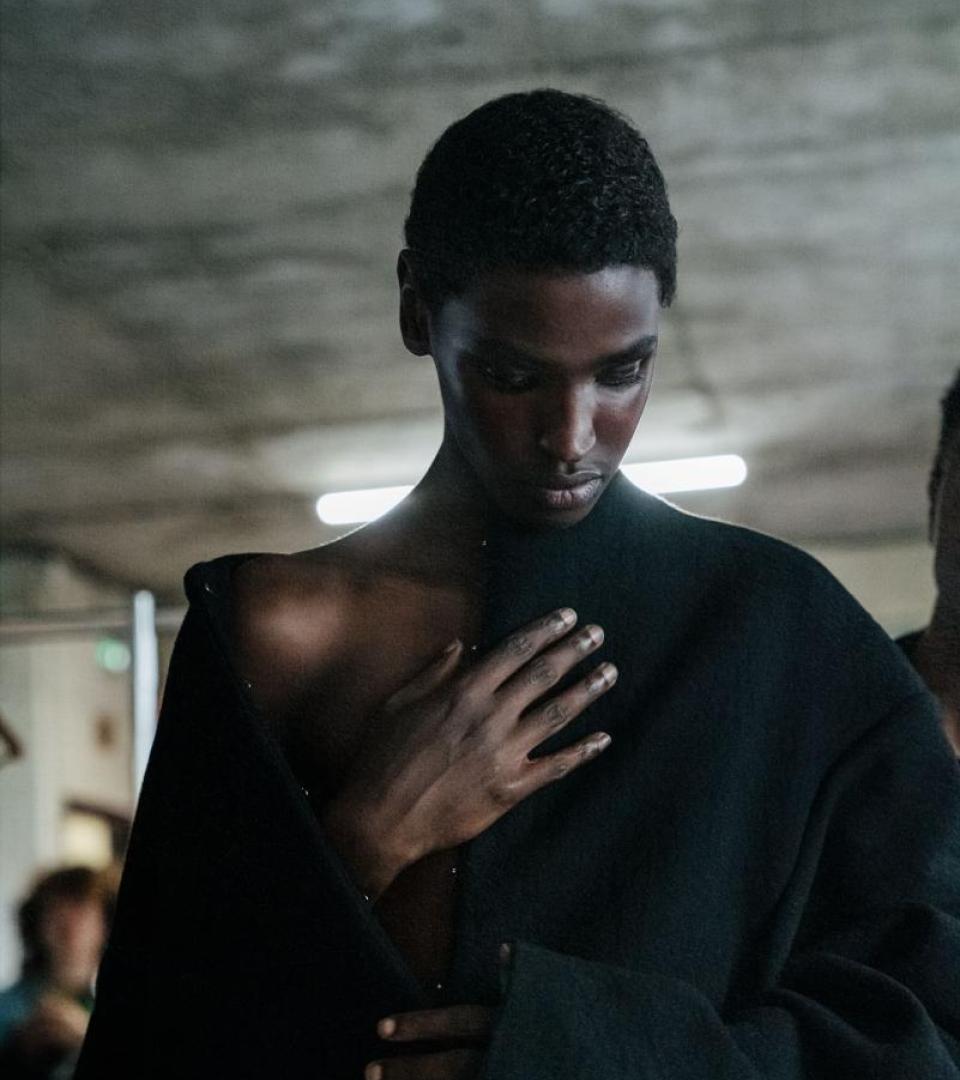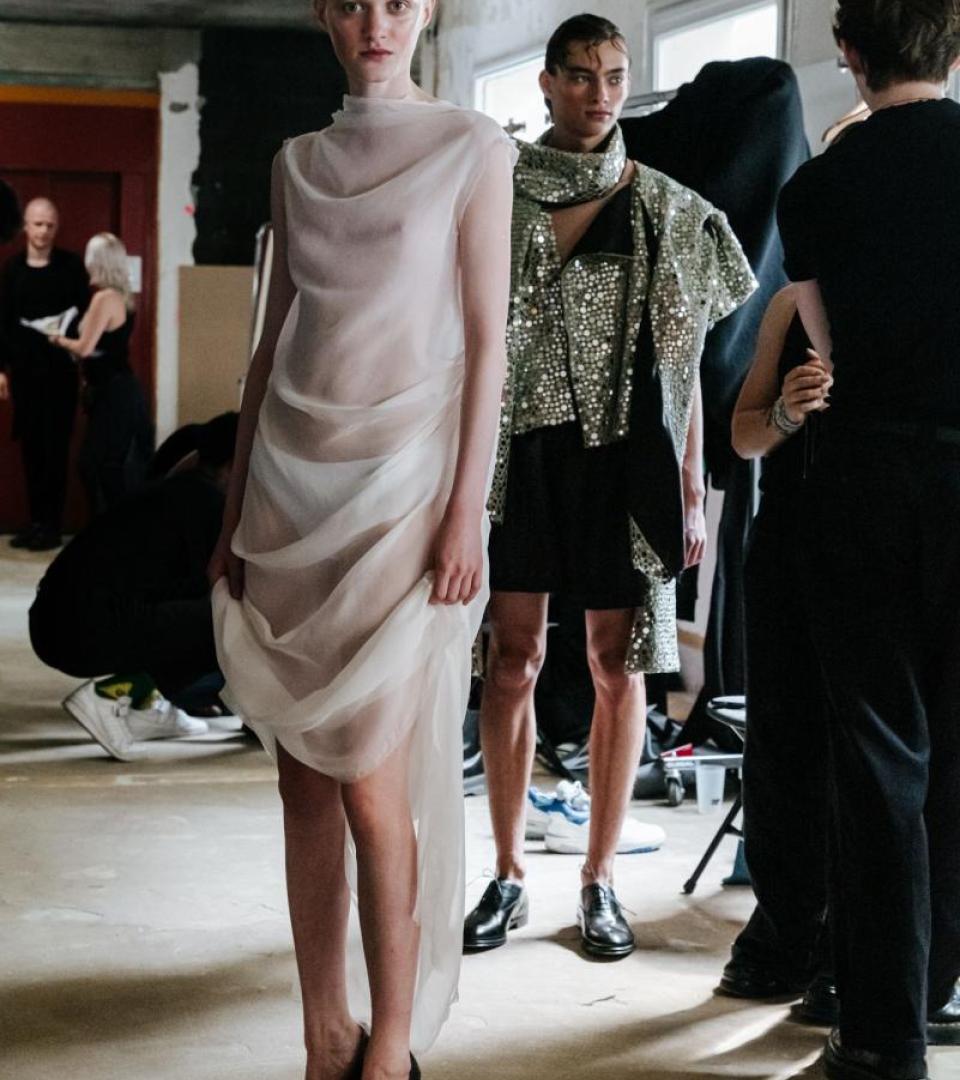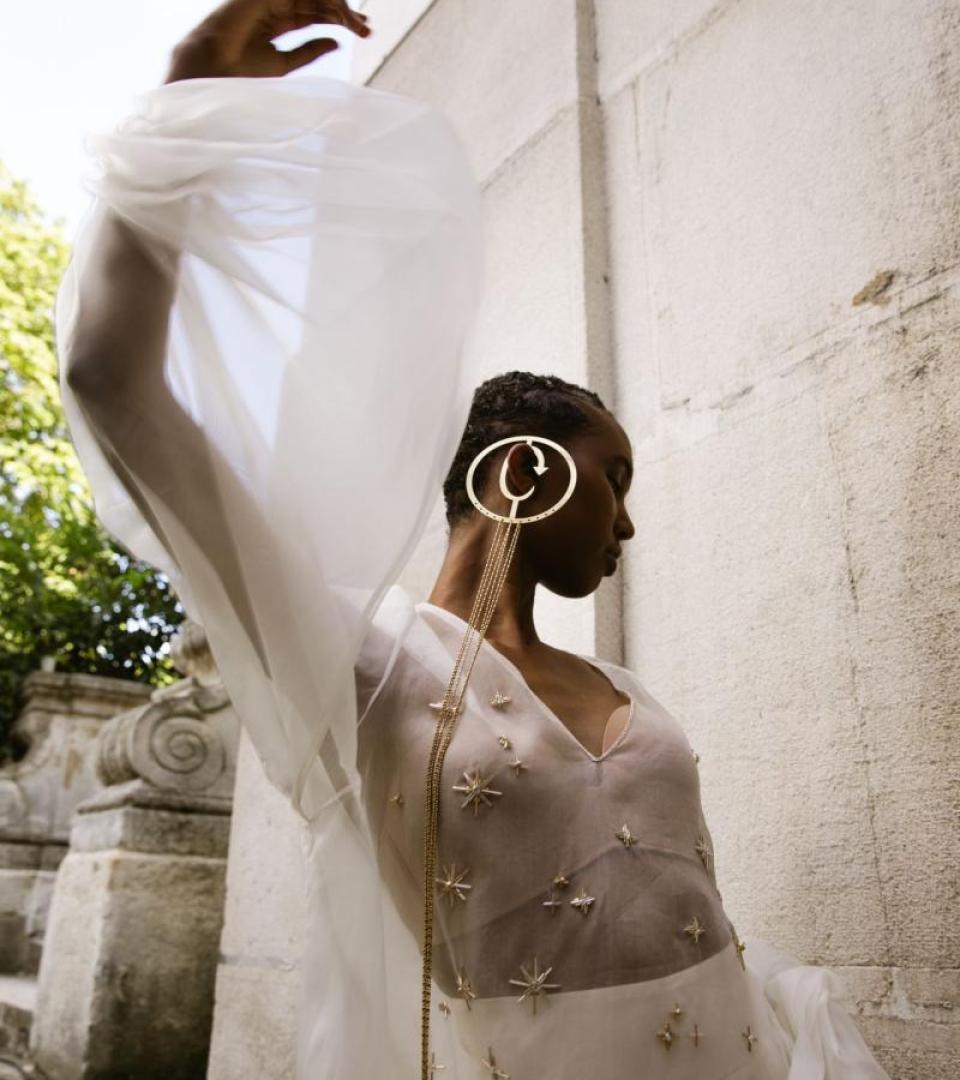Magalie Guérin: "The Hyères Festival aims to promote contemporary creation to both professionals and the general public."
Deputy Director of Villa Noailles, Magalie Guérin has contributed for twenty years to the collective and visionary project founded by Jean-Pierre Blanc, in the wake of patrons and aesthetes Marie-Laure and Charles de Noailles. A native of Hyères, she grew up with the Festival which she was already passionate about as a teenager, and today carries forward with the teams of this internationally renowned art centre, deeply rooted locally, the same mission: to discover and support young talents in fashion, photography, design and architecture through bespoke, attentive and caring support. A philosophy of sharing reaffirmed in this 40th edition.
What do young artists need? A space to exhibit, guidance to develop, and opportunities to connect. This is precisely what the Festival de Hyères has offered since 1986, founded by Jean-Pierre Blanc. Initially devoted to fashion designers, the festival expanded to photography in 1997, and to accessories in 2016, continuing its mission to support rising talent. The Villa Noailles, established as a contemporary art centre in 2003, is a place for encounter and dialogue for artists, from newcomers to seasoned figures. "It's striking to see that what seemed so ambitious has ultimately ticked all the boxes," observes Magalie Guérin. Born in Hyères and a graduate of the Beaux-Arts in Marseille, she grew up with this art centre on the horizon. She first did an internship there, then a few assignments in the production team, in operations, and discovered "the excitement of working on a large-scale project, with so many different professions." After three years, her trajectory shifted: "Two days before obtaining my degree, the production manager at the time called me with two pieces of news, one bad and one good. The bad news was that I would no longer be working with him. The good news was that the director wanted me to join his team, in artistic direction." Jean-Pierre Blanc, a remarkable talent spotter, entrusted her. "I sometimes think back to the 14-year-old girl I was, who had begged her mother to buy her Vogue Italia. And thanks to the Hyères Festival, it was at home." The personalities frozen on the magazine's pages became her interlocutors. "I found myself surrounded by great exhibition curators, artists with auras and backgrounds that impressed me." When Jean-Pierre Blanc one day assigned her to curate an exhibition, she doubted herself and asked him if he thought she would manage it. "He replied: Of course, since you're going to do it. You're capable of anything, so go ahead. It's this trust, this way of saying to others: 'I'm backing you'."
"At Villa Noailles, everything aims to make designers feel comfortable, in a spirit of care and sharing. I'd say we don't know how to work any other way. I do what I would have liked to have been done for me if I were in their position."
"For the three disciplines in competition - Fashion, Photography, Accessories - the juries determine the 10 finalists per category from amongst the hundreds of applications received. It's free to apply, which is quite unprecedented." Magalie Guérin primarily works with the finalists in photography and product design, whom she first meets so that "they can explain to me in their own words, and not through a paper file, what their vision of photography is, the subject of their series". Once each project is understood, a meticulous, bespoke support process begins. "We meet our partners in Paris, notably at the 7L bookshop, a major partner of the Grand Prix, as the laureate is offered a publication dedicated to their work." The finalists discover all the stages of creating an exhibition. "We also go to the Sheriff Project laboratory which will produce all the prints. We also visit Atelier Mondineu which creates the frames." Regular meetings follow, which can last one to two hours. "For my part, I have to design a balanced collective exhibition to give everyone the same chance." She produces a catalogue, digital this year, in which each photographer writes a text. "I sometimes support them in the writing. It regularly happens that artists struggle a bit to identify what is essential in their work." The preparations extend to rehearsals of presentations to the jury, the press or the general public. "We put ourselves in the right conditions with colleagues and sometimes with former winners, who are present at Villa Noailles for their own exhibitions, who play along, they've been through it before. It allows them to be in the best conditions." For fifteen years, she has directed the entire publishing department of Villa Noailles, the catalogues, the books. This editorial sensibility that has always been present in her work, developed at the Beaux-Arts through projects drawing on literature, printing, screen printing, engraving and publishing.
"This year, the entire Festival programme is even more developed to engage all audiences."
Magalie Guérin and Julie Liger, also deputy director, built this 40th edition together by placing the competitions back at the centre. This year, there is no jury president: all jury members are presidents. "The spaces usually dedicated to the jury presidents' exhibitions are going this year to the finalists and winners from the previous edition. The entire House is dedicated to them. The idea is also to create encounters." She observes a supportive, familial atmosphere. "Former winners kindly advise their successors. There are also some former laureates on the juries, Luis Alberto Rodriguez for photography, Julien Dossena for fashion, which gives perspectives." Some even offer workshops, such as Manon Marcelot, accessories finalist from the 36th Festival, or La Cage, fashion finalists from the 39th Festival. "We also wanted to ensure that professionals and the public could spend as much time as possible with the finalists and the winners." Exchange moments are organised with professionals, the press or the general public. "It's very rare to have access to this, to a creator who will themselves present their collection, the artistic and intellectual dimension of their work. It was really important for us to put that back at the centre."
The International Fashion Encounters, organised by the Fédération de la Haute Couture et de la Mode, a partner of the Festival, are taking place this year on the Villa's forecourt, accessible to all. "These are professional encounters and there are a huge number of students who get accredited for the festival, which is free for them. It's also an opportunity to show that there are many professions that perhaps people don't envision, and that can encourage people." This edition also hosts the first fashion and photography book publishers' fairs. "We invited independent publishers, sometimes created by artists themselves, and major publishers, to present lots of publications, books, magazines. It's a way of including people, and of demystifying too. Of opening things up."
Reuben Attia



